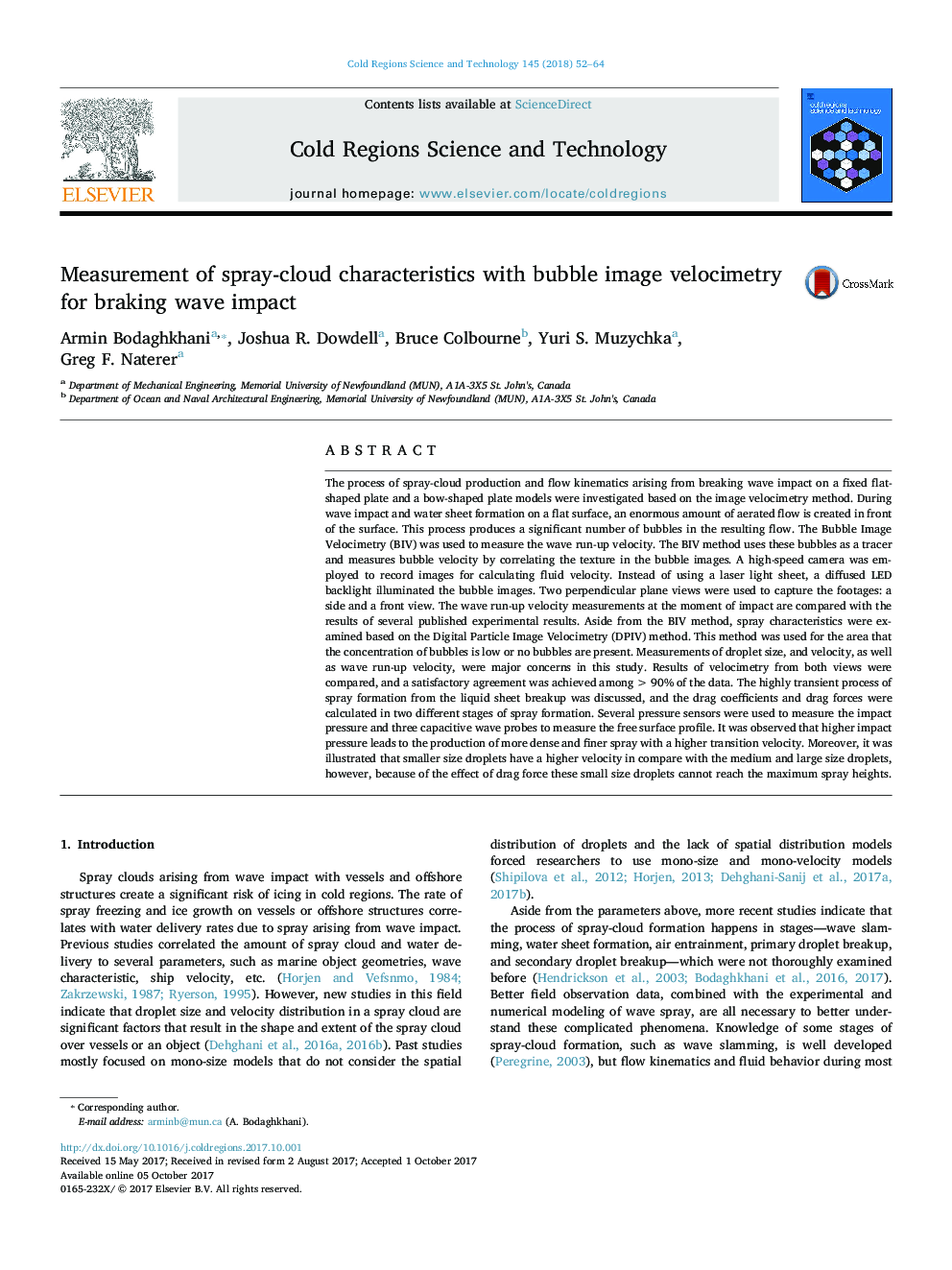| کد مقاله | کد نشریه | سال انتشار | مقاله انگلیسی | نسخه تمام متن |
|---|---|---|---|---|
| 5779323 | 1634419 | 2018 | 13 صفحه PDF | دانلود رایگان |
عنوان انگلیسی مقاله ISI
Measurement of spray-cloud characteristics with bubble image velocimetry for braking wave impact
ترجمه فارسی عنوان
اندازه گیری ویژگی های اسپری ابر با سرعت سنجی تصویر حباب برای تاثیر موج برشی
دانلود مقاله + سفارش ترجمه
دانلود مقاله ISI انگلیسی
رایگان برای ایرانیان
موضوعات مرتبط
مهندسی و علوم پایه
علوم زمین و سیارات
علوم زمین و سیاره ای (عمومی)
چکیده انگلیسی
The process of spray-cloud production and flow kinematics arising from breaking wave impact on a fixed flat-shaped plate and a bow-shaped plate models were investigated based on the image velocimetry method. During wave impact and water sheet formation on a flat surface, an enormous amount of aerated flow is created in front of the surface. This process produces a significant number of bubbles in the resulting flow. The Bubble Image Velocimetry (BIV) was used to measure the wave run-up velocity. The BIV method uses these bubbles as a tracer and measures bubble velocity by correlating the texture in the bubble images. A high-speed camera was employed to record images for calculating fluid velocity. Instead of using a laser light sheet, a diffused LED backlight illuminated the bubble images. Two perpendicular plane views were used to capture the footages: a side and a front view. The wave run-up velocity measurements at the moment of impact are compared with the results of several published experimental results. Aside from the BIV method, spray characteristics were examined based on the Digital Particle Image Velocimetry (DPIV) method. This method was used for the area that the concentration of bubbles is low or no bubbles are present. Measurements of droplet size, and velocity, as well as wave run-up velocity, were major concerns in this study. Results of velocimetry from both views were compared, and a satisfactory agreement was achieved among >Â 90% of the data. The highly transient process of spray formation from the liquid sheet breakup was discussed, and the drag coefficients and drag forces were calculated in two different stages of spray formation. Several pressure sensors were used to measure the impact pressure and three capacitive wave probes to measure the free surface profile. It was observed that higher impact pressure leads to the production of more dense and finer spray with a higher transition velocity. Moreover, it was illustrated that smaller size droplets have a higher velocity in compare with the medium and large size droplets, however, because of the effect of drag force these small size droplets cannot reach the maximum spray heights.
ناشر
Database: Elsevier - ScienceDirect (ساینس دایرکت)
Journal: Cold Regions Science and Technology - Volume 145, January 2018, Pages 52-64
Journal: Cold Regions Science and Technology - Volume 145, January 2018, Pages 52-64
نویسندگان
Armin Bodaghkhani, Joshua R. Dowdell, Bruce Colbourne, Yuri S. Muzychka, Greg F. Naterer,
